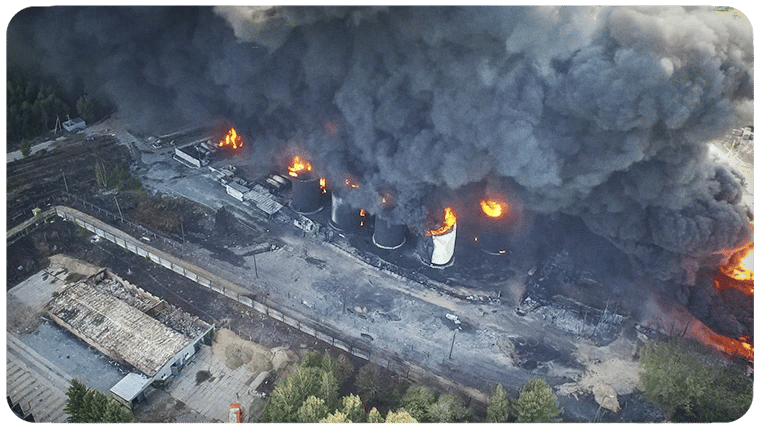- Products
- Use Cases
- Process contractors and validate credentials
- Improve facility compliance to industry standards
- Improve speed of visitor check-in process
- Screen visitors or restrict access to my facility
- Automate my reception experience
- Improve and automate my facility evacuation process
- Manage facility security across multiple locations
- Industries
- Pricing
- Resources
- Company
The Four Phases of Emergency Management
by iLobby
May 15, 2023
Effective disaster planning requires a holistic approach that involves both automation and a human touch to ensure organizational resiliency. Follow these four phases of disaster and emergency management to prepare your organization:
-
Mitigation
The mitigation phase of emergency planning involves reducing the possible impacts of an emergency or preventing it from happening in the first place. That means minimizing work stoppages and preventing safety hazards that can cause injury or death.
Mitigation in emergency management includes activities such as identifying potential hazards. Once you create a list of them, you can implement the best strategies to reduce the likelihood that they occur.
Mitigation efforts include enhancing entry point security by screening visitors or limiting access to your facility. For instance, in sensitive industries like defense and aerospace, you can implement a visitor sign-in system that denies entry to flagged individuals such as terrorists.
The goal is to reduce the costs of an emergency event. These costs could relate to lost productivity, property, and lives.
-
Preparedness
After you mitigate potential risks, the next step is to determine the procedures and systems that will enable your organization to respond effectively to emergencies. Your facility needs a clear plan and standard response procedures for different situations.
The focus of your emergency preparedness will depend on the types of emergencies that your organization is likely to face. These vary depending on factors such as your industry type and the climate in your region.

For instance, if you are a plant manager in a food manufacturing facility, you should be concerned about how you would deal with food contamination. Likewise, if your facility is located in a region with frequent floods, you should consider ways to mitigate the effects of flooding. Once you understand the risks you face, determine the resources you need to respond to and recover from emergencies.
-
Response
The response phase in emergency management is activated when a disaster occurs. It aims to manage and control the situation to minimize the impact on people, property, and the environment. The right emergency response procedures mean the difference between a disaster and a brief moment of chaos.
When an event occurs, the first step should be implementing your emergency response plan. Your emergency response system should alert key personnel and visitors in the organization about the emergency. Inform them about the evacuation process and remind them of the mustering point.
Alert the relevant authorities, such as law enforcement, firefighters, emergency medical technicians, and other first responders. There should also be an incident command system to coordinate the movement of personnel, equipment, and supplies. Make your response as fast as possible to reduce the potential damage from the event.

-
Recovery
Emergency recovery focuses on returning your facility to normal operations and restoring any damage caused by the disaster. The recovery phase starts with assessing the damages, identifying resources to restore services, and providing psychological support for impacted employees.
You must also document all activities during this time, as it helps with future emergency preparedness strategies. Key activities during the recovery phase include:
- Cleaning up any debris caused by the disaster
- Repairing or replacing damaged equipment and infrastructure
- Assisting affected employees in returning to work and providing time off for those who need it
- Ensuring a safe working environment
An effective recovery plan facilitates a quick return to work as you already know what to do after a disaster. The plan also gives employees direction and reassurance, which helps restore morale.
How To Build an Effective Emergency Response Plan
There are several steps to follow to build an effective emergency response plan. They include:
Risk assessment
Start by identifying the types of risks you are likely to face and the vulnerabilities that could increase the likelihood of the risks occurring. Look at both internal and external risks, such as fires, floods, terrorist attacks, and workplace accidents.
Assign roles and responsibilities
Establish an emergency response team and assign roles and responsibilities to each team member. Train each team member in their respective roles so they know what to do in an emergency. Ensure the individuals understand how to use emergency management software and other emergency response resources.
Acquire the right technology
Digitizing emergency management with the right software ensures a swift and effective response to disasters. Consider software that allows for real-time monitoring, creates digital visitor logs, and automates facility processes such as check-ins. This technology allows you to initiate action immediately, send evacuation messages promptly, and manage disasters in real-time.
Create protocols
Develop protocols that detail how the emergency response team is expected to act in different scenarios. Establish processes for reporting incidents, activating emergency plans, communicating with personnel, and managing crises. Make sure everyone in the organization knows these protocols and is prepared to act appropriately.
Keep innovating
Emergencies are always evolving, so you must stay ahead of the curve. Research new technologies and procedures that can improve your emergency response plan. Keep evaluating your plan to identify challenges and areas for improvement.
Respond Efficiently With Emergency Management Software
The right emergency management software will take your disaster response from reactive to proactive. It helps you identify potential risks ahead of time, plan, and respond quickly in an emergency.
EmergencyOS is iLobby’s emergency management solution that helps with efficient emergency management. The software helps you to be proactive in keeping everyone in your facility safe during an emergency. It digitizes evacuation and ensures everyone gets to the right mustering point.
iLobby
iLobby is the global leader in facility and visitor management for complex enterprises and regulated industries. Deployed across more than 6,000 sites worldwide, iLobby’s FacilityOS platform powers complex work environments by optimizing and automating key facility processes to achieve regulatory compliance, enforce safety protocols, and drive site security requirements.
Related Posts
View All Posts
Emergency Management
6 min read
Effective Emergency Planning: A Five-Step Guide to Ensuring Safety & Compliance
Continue Reading
Emergency Management
6 min read
Why You Need to Automate Your Workplace Emergency Drills
Continue Reading
Guide
13 min read

